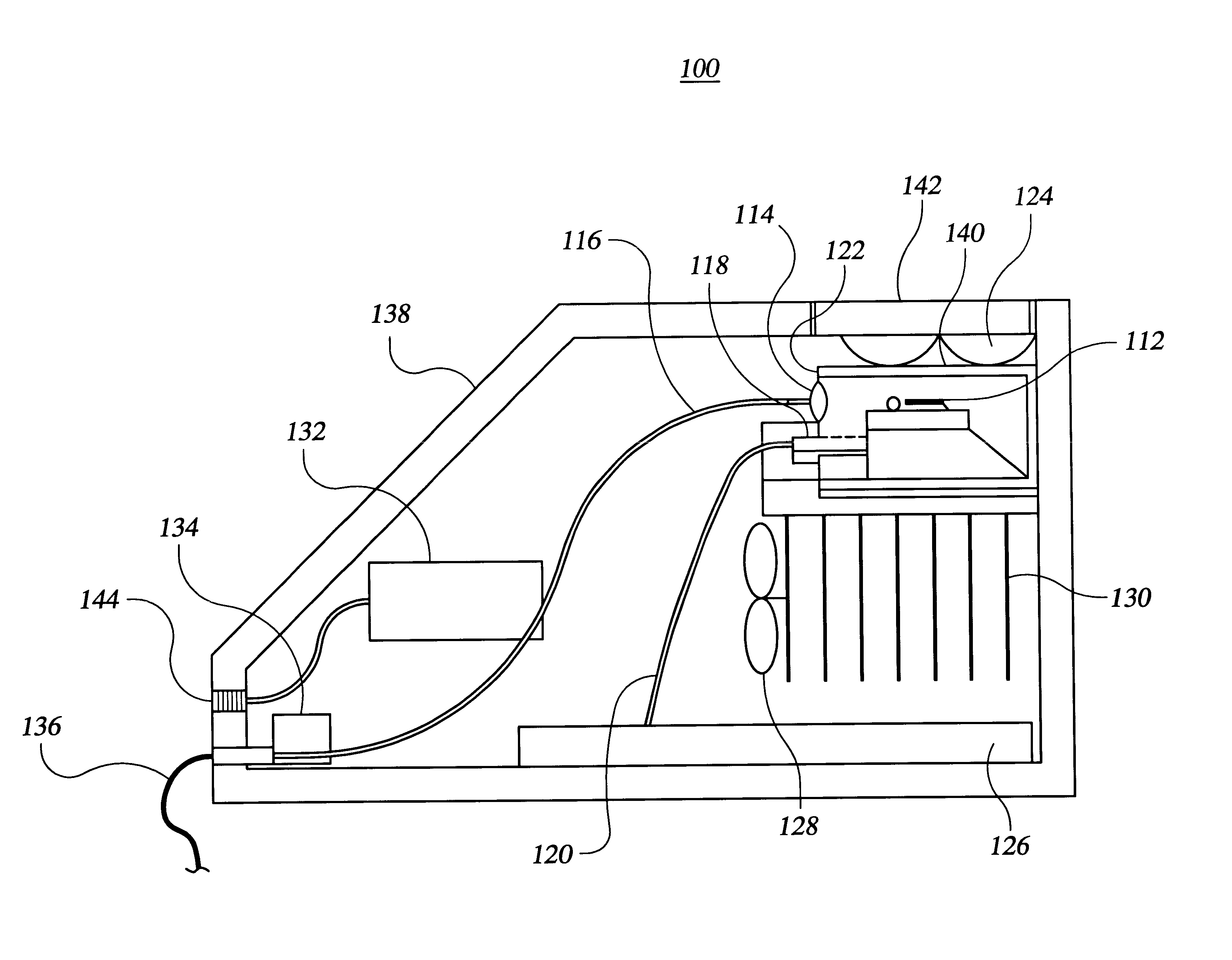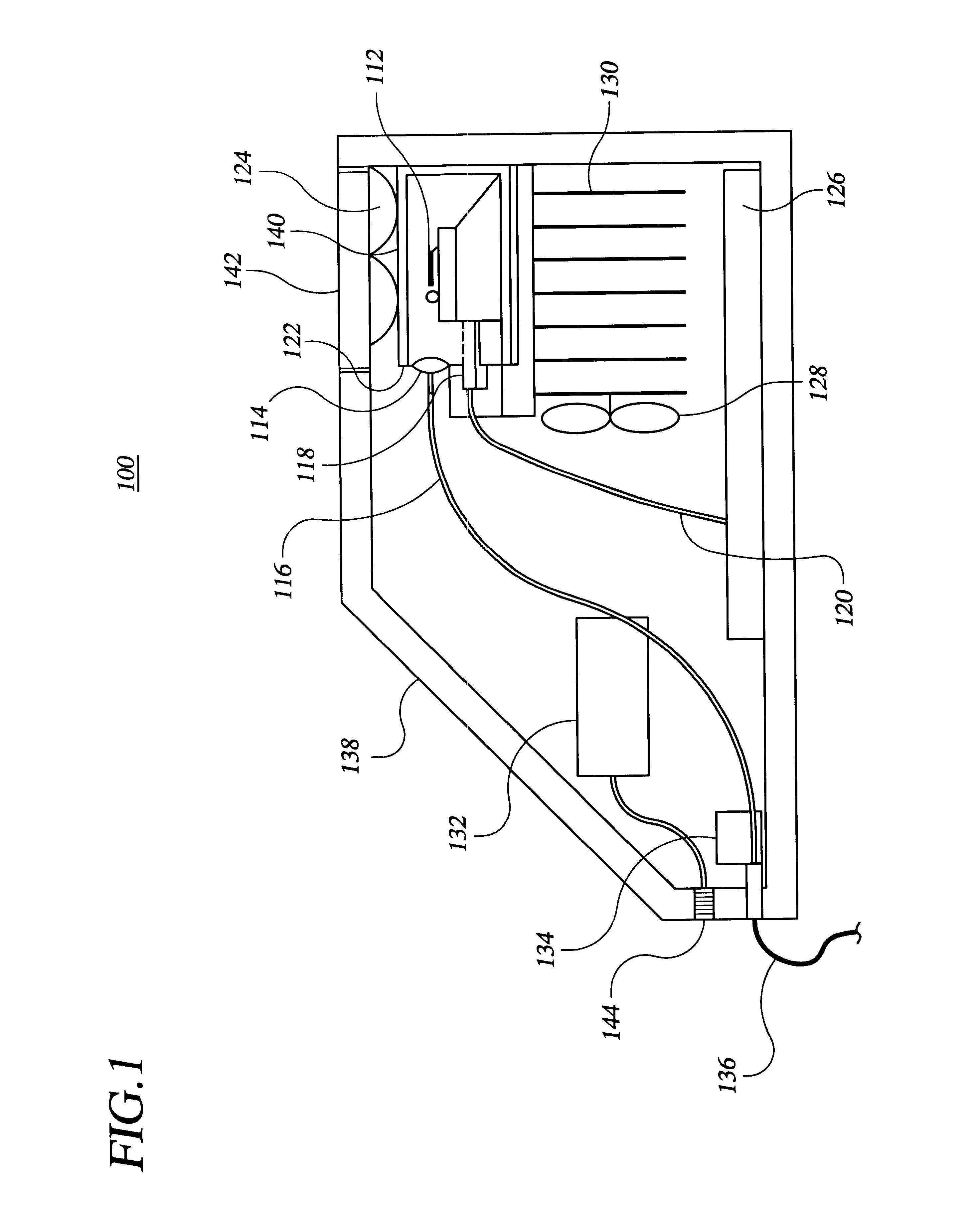Tunable diode laser system for photodynamic therapy
a diode laser and photodynamic therapy technology, applied in the direction of photodynamic therapy, semiconductor lasers, optical resonator shape and construction, etc., can solve the problems of inefficiency inconvenient maintenance, and large size of dye laser systems, so as to facilitate the selection of cartridges and facilitate maintenance , the effect of low cos
- Summary
- Abstract
- Description
- Claims
- Application Information
AI Technical Summary
Benefits of technology
Problems solved by technology
Method used
Image
Examples
example 2
Laser diode cartridge A has an operating wavelength of 630 nm. The radiation procedure with cartridge A is completed and the cartridge is then replaced by cartridge B, which has an operating wavelength of 680 nm. Power is supplied and light is emitted at the new wavelength.
example 3
Laser diode cartridges A, B and C have operating wavelengths of 630 nm, 680 nm and 720 nm respectively and all three are contained in the base unit. Cartridge B is selected by means of a computer / controller on the outside of the base unit. The output of the system is 680 nm. Power to cartridge B is disconnected and cartridge C is selected. The output of the system is then 720 nm.
example 4
Laser diode cartridges A (630 nm), B (680 nm) and C (720 nm) are all contained in the base unit. The user selects all three cartridges by means of a computer / controller. Output from the three cartridges is combined into one fiber using a combiner as described in U.S. Pat. No. 5,668,903. Power is supplied and the system has an output of light at three different wavelengths.
Yet another multiple cartridge embodiment provides for multiple cartridges of the same wavelength to be contained in the base unit. In this case, multiple cartridges could be electrically powered simultaneously to boost laser power. This can provide a solution to the problem of wavelengths for which high power diode lasers are not presently available, but are needed for medical applications. If, however, longevity and not power is the goal of the system user, all of the diode cartridges can be powered at a fraction of full power, creating built-in redundancy. Such a system would not only have the advantage of longe...
PUM
 Login to View More
Login to View More Abstract
Description
Claims
Application Information
 Login to View More
Login to View More - R&D
- Intellectual Property
- Life Sciences
- Materials
- Tech Scout
- Unparalleled Data Quality
- Higher Quality Content
- 60% Fewer Hallucinations
Browse by: Latest US Patents, China's latest patents, Technical Efficacy Thesaurus, Application Domain, Technology Topic, Popular Technical Reports.
© 2025 PatSnap. All rights reserved.Legal|Privacy policy|Modern Slavery Act Transparency Statement|Sitemap|About US| Contact US: help@patsnap.com



